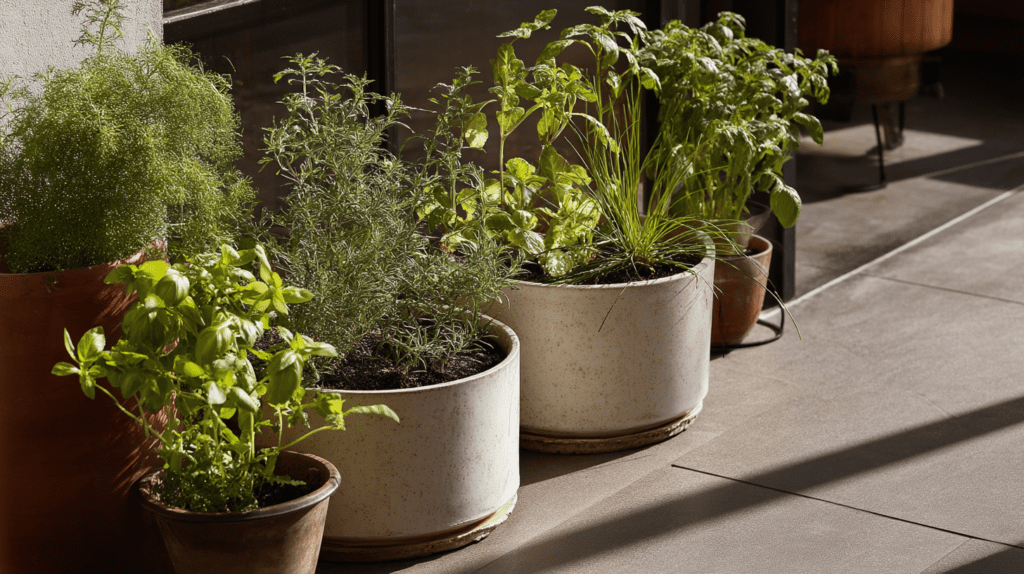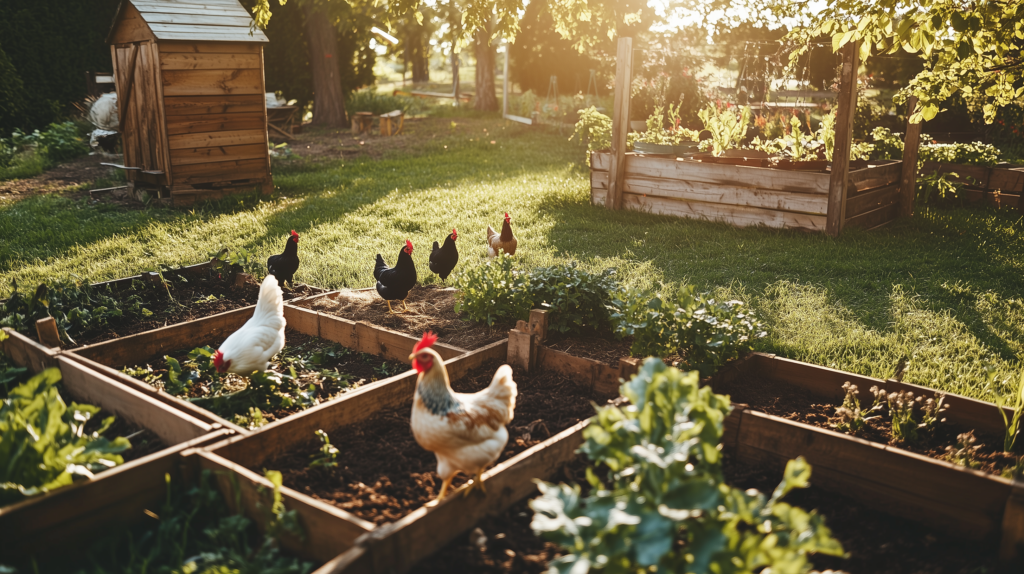This post may contain affiliate links, including those from Amazon Associates. If you make a purchase through these links, I may earn a commission at no additional cost to you. Learn more about our affiliate policy.
Starting a container garden as a renter feels like a rebellion against having limited space. Fresh herbs and veggies right outside your door, no matter where you live.
Urban life can make gardening seem out of reach for many of us with small balconies, tricky soil, and the overwhelm of figuring it out alone often holding us back.
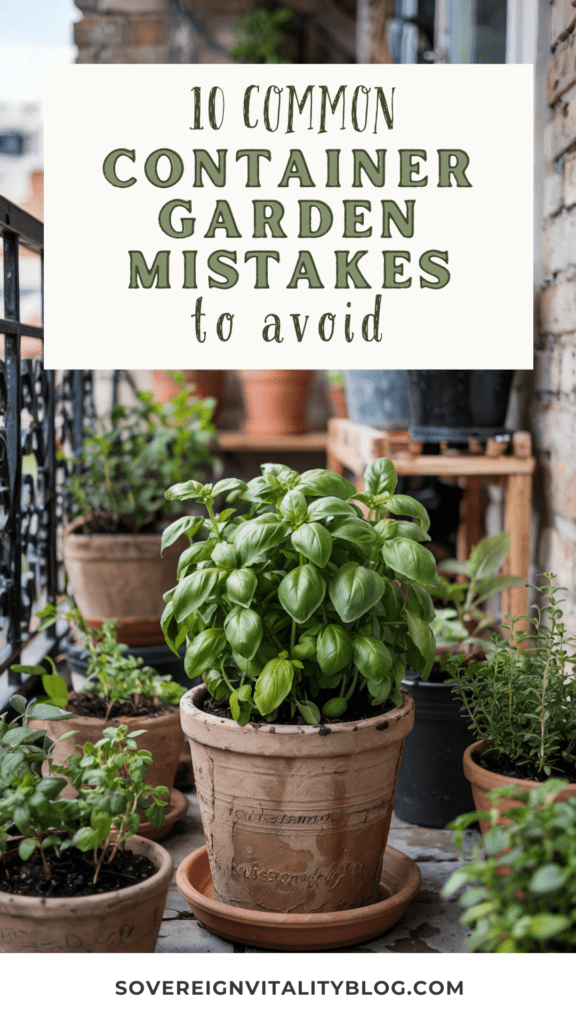
I’ve stumbled through my share of mistakes, like drowning plants or watching them wilt from neglect, and I know how disheartening it can feel when things don’t grow as hoped.
Today, I’m sharing 10 common missteps I’ve gathered from seasoned gardeners and my own little patio experiments. You’ll find simple fixes and practical tips to grow with confidence, even in the tiniest urban corner.
Choosing and Prepping Your Containers
Getting the right containers can make or break your garden. It’s tempting to grab whatever’s handy, but a little forethought and care here sets you up for success.
Mistake 1: Using Pots That Are Too Small
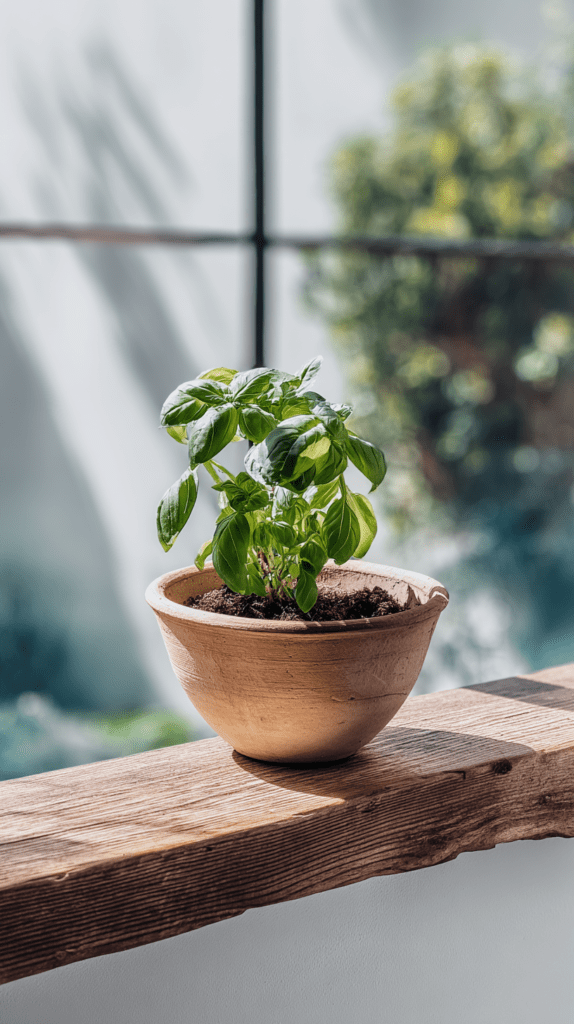
I learned this one the hard way, my first basil plant wilted in a tiny pot that dried out before lunch. Small containers limit root growth and don’t hold enough water, especially for veggies like tomatoes or peppers.
- Opt for at least 5-gallon containers for most vegetables and larger herbs.
- Try 10–20 gallon grow bags for tomatoes, peppers, or bushy herbs. They’re lightweight and hold moisture well.
- Bonus: Bigger pots are harder to swipe if you’re gardening in a shared urban space.
Larger containers give roots room to stretch and keep your plants happier longer. It’s a small shift that makes a big difference.
Mistake 2: Ignoring Drainage
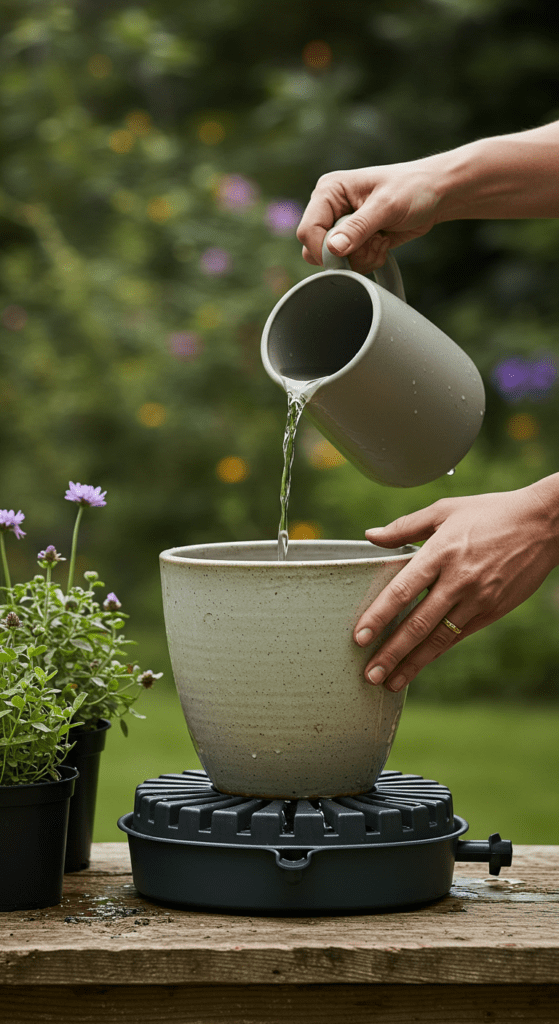
Poor drainage is a silent killer. My first tomato plant turned into a smelly mess from root rot. Even pots with holes can trick you if they don’t work right.
- Test drainage by pouring water through before planting and watch it flow out.
- Drill extra holes if it pools, and add a layer of gravel or sticks at the bottom.
- Keep soil from compacting over those holes to avoid soggy roots.
A quick check saves heartache later. Healthy roots need air as much as water.
Nurturing Your Soil and Plants
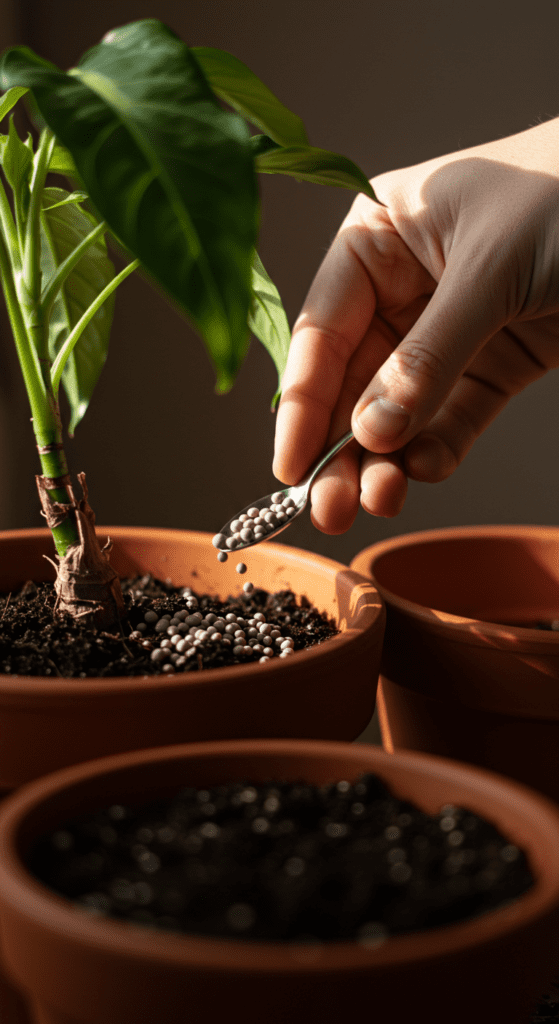
Container plants rely on you for everything including soil and food especially. Skimping here can leave them struggling.
Mistake 3: Overlooking Fertilizer Needs
Did you know nutrients slip away with every watering? I didn’t realize this until my cucumbers started yellowing. Container plants get hungry fast.
- Feed every 1–2 weeks with organic options like Espoma Garden-tone, Down to Earth 4-6-2, or worm castings.
- Watch for signs like yellow leaves, slow growth, or weak fruit. This means your plants are asking for help.
- Mix in a little biotone soil additive for an extra boost if you’re starting fresh.
Regular feeding keeps them thriving. It’s like a gentle nudge to help them grow strong.
Mistake 4: Spending Too Much on Soil
Filling big pots with expensive soil hit my wallet hard early on. There’s a smarter way to stretch your budget.
- Fill the bottom third with sticks, small logs, or coarse mulch, hugelkultur-style.
- Top off with a layer of nutrient-rich soil for roots to dig into.
- This trick retains moisture and improves drainage while cutting costs.
It’s a resourceful little hack that feels good to pull off. Less waste = more growth.
Caring for Your Garden Day-to-Day
Daily care doesn’t have to be a chore. A few simple habits can keep your plants happy without overwhelming you.
Mistake 5: Guessing When to Water
Overwatering drowned my thyme once; underwatering left my lettuce limp. Guessing didn’t cut it until I found a better way.
- Stick your finger 1–2 inches into the soil. Dry means water, moist means wait.
- Try a chopstick or skewer instead. Pull it out and check for dampness, like testing a cake.
- Water deeply when it’s time, letting it soak through to the roots.
This little ritual takes the guesswork out. Your plants will show you their rhythm soon enough.
Mistake 6: Mixing Plants That Don’t Play Nice
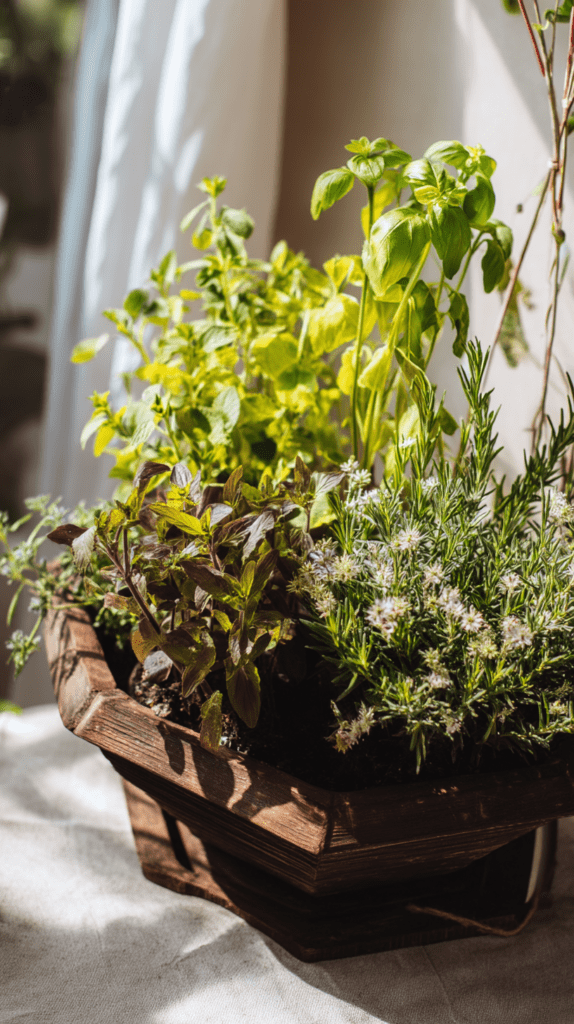
I thought marigolds with my tomatoes would keep pests away, but in one pot, they just competed. Pairing needs a bit of thought.
- Try companions like tomatoes with basil, or carrots with chives, they get along beautifully.
- Keep pest-repellent marigolds or calendula in separate pots nearby, not crowded together.
- Avoid mixing heavy feeders in tight spaces, they’ll fight for nutrients.
Smart pairing keeps everyone thriving. Explore some unique crops that pair beautifully in containers to add variety to your garden.
Making the Most of Your Urban Space
Small spaces and city challenges don’t have to stop you. These tips turn limits into opportunities.
Mistake 7: Forgetting Small Pots for Certain Herbs
Mint in a big pot took over everything! I underestimated how wild it can get. Some herbs love a snug fit.
- Use 1–2 gallon pots for invasive herbs like mint or thyme, they do better slightly root-bound.
- Pair them near a bigger planter with rosemary or basil for a balanced setup.
- Keep them contained to avoid a takeover in your little garden.
Small pots can be your allies. They tame the wild ones and free up space for others.
Mistake 8: Not Planning for Mobility
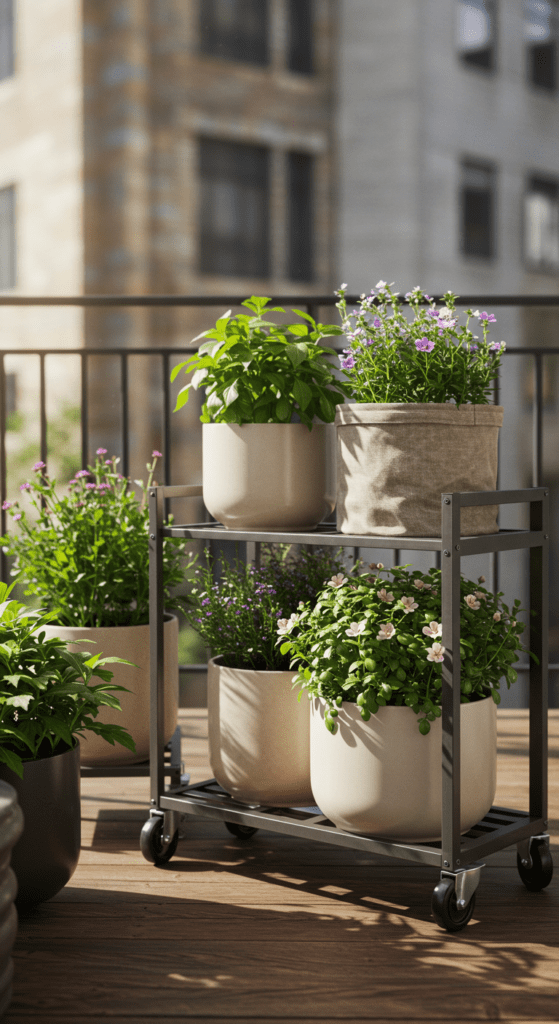
Chasing sunlight across my patio wore me out until I got clever. Moving pots shouldn’t be a struggle.
- Repurpose Styrofoam coolers for planters. Just add drainage holes for lightweight, insulative containers.
- Set pots on plant caddies with wheels to roll them toward the sun.
- Shift them easily as seasons change or light moves, it’s less work than you’d think.
Mobility keeps your garden flexible. Check out these budget-friendly DIY container ideas for more ways to repurpose what you’ve got.
Mistake 9: Skimping on Security
A missing pot taught me urban gardening needs a little safeguarding. It’s worth protecting your efforts.
- Add motion-activated lights to scare off nighttime visitors.
- Choose thorny plants like container roses, beautiful and prickly enough to deter hands.
- Weigh pots with stones at the base for stability, no one’s walking off with them easily.
A few small steps keep your garden yours. Peace of mind lets you enjoy the growing.
Mistake 10: Ignoring Grow Bag Benefits
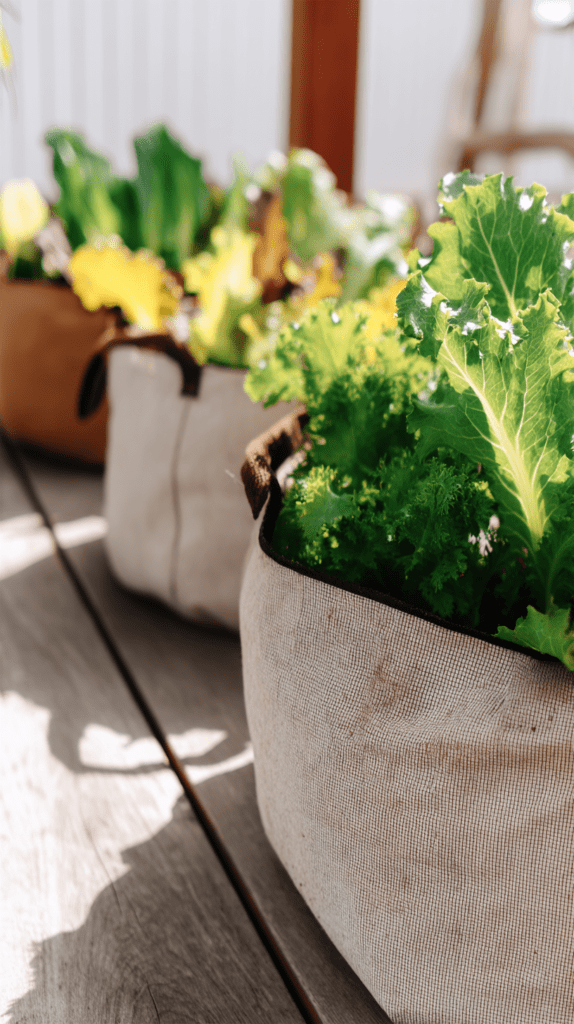
Plastic pots were fine until I saw how much happier plants are in breathable fabric. Grow bags changed the game.
- Pick sizes from 1–30 gallons. Vivosun’s a sturdy choice that lasts.
- They’re biodegradable, store flat, and let roots breathe to avoid rot.
- Upsize as plants grow, perfect for renters or shifting spaces.
Grow bags bring simplicity and health to your garden. They’re a quiet upgrade that feels just right.
Wrapping Up
These 10 container gardening fixes turned my mistakes into lessons. From picking the right pots to feeding your plants with care, you’ve got everything you need to start small and grow strong, even in an urban nook.
I’ve watched my own little patio transform with these tweaks, each sprig of basil or ripe tomato feels like a tiny victory.
Take it one pot at a time. Your first harvest will spark that magic, and I promise it’s worth it.

